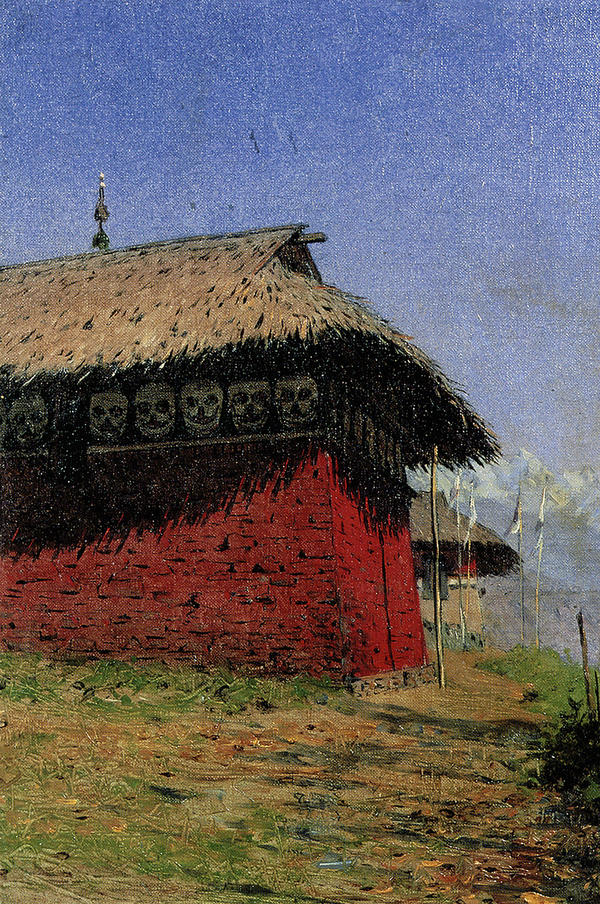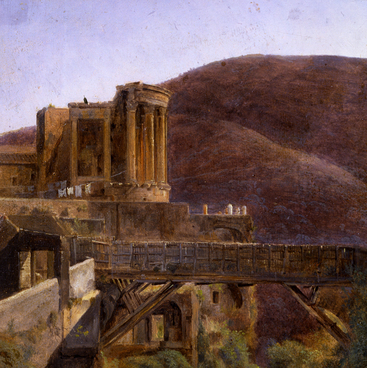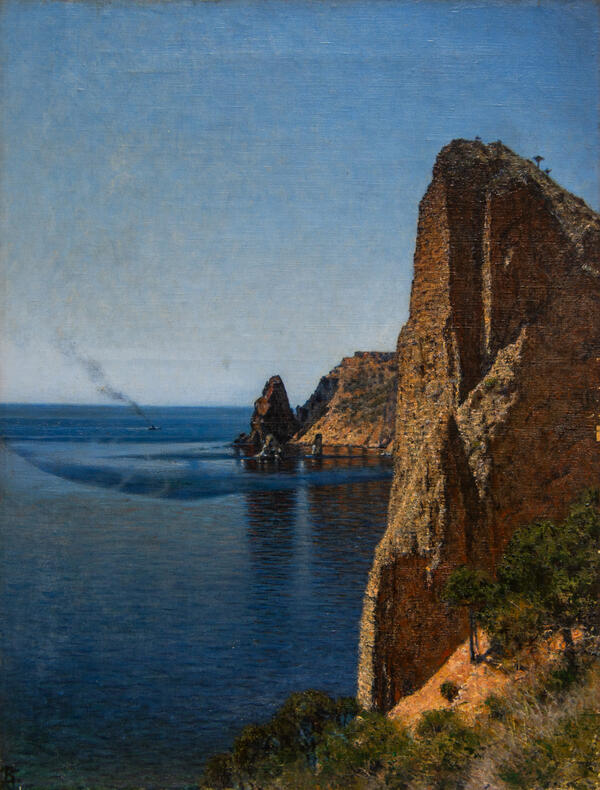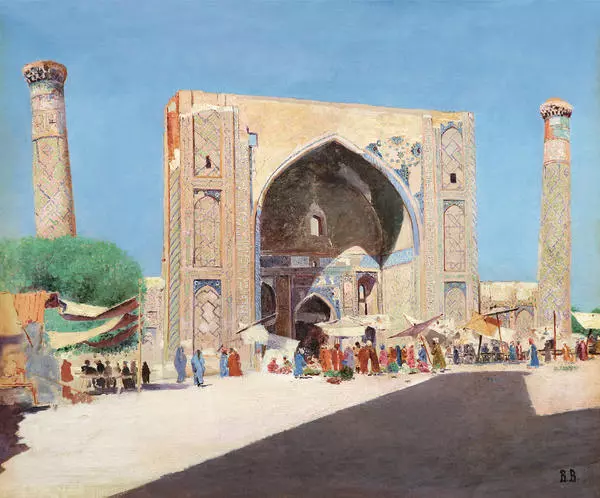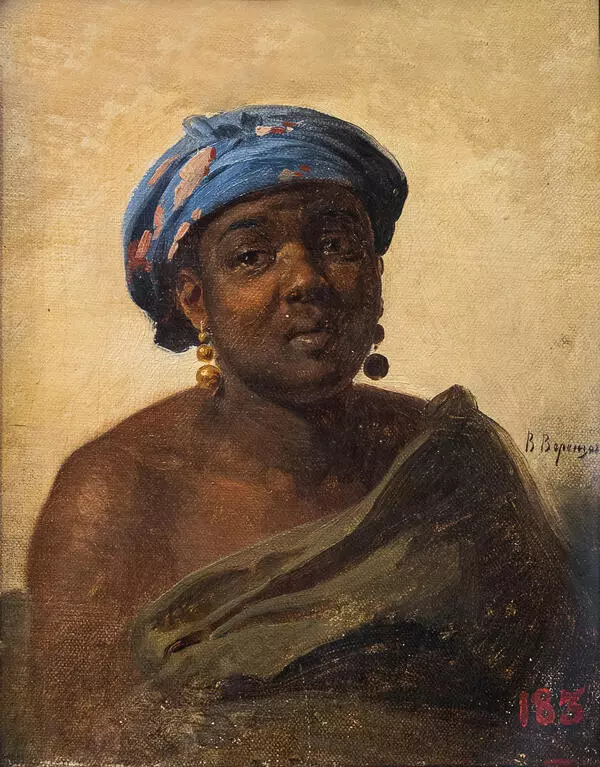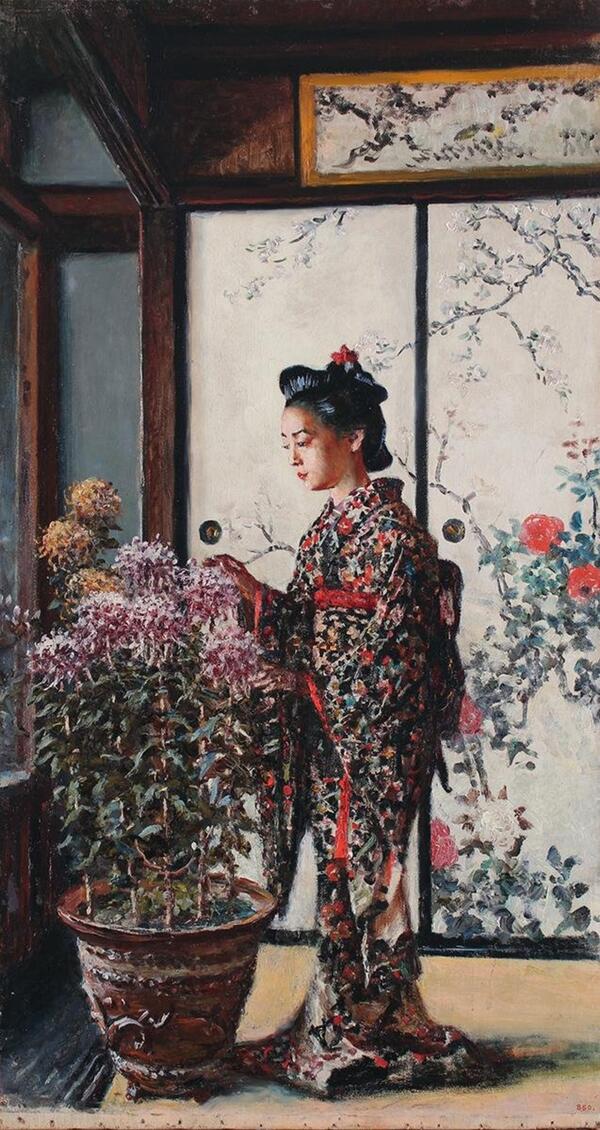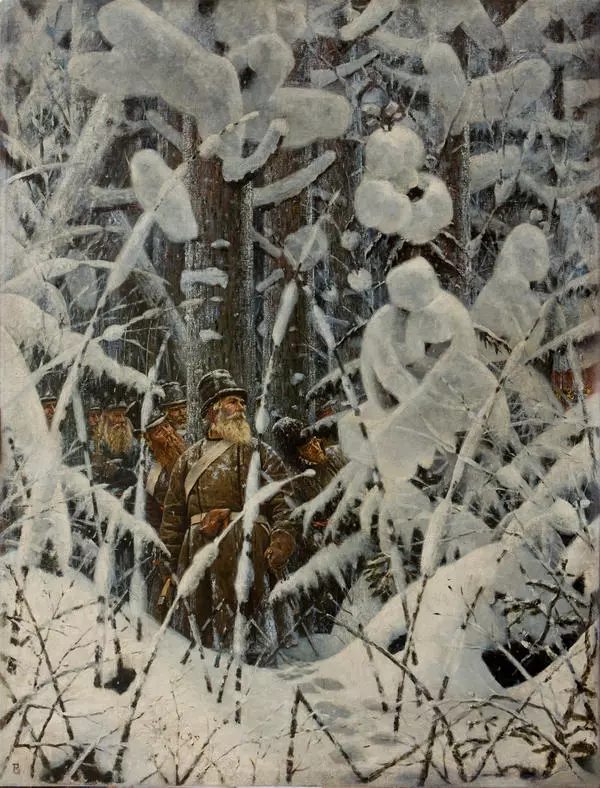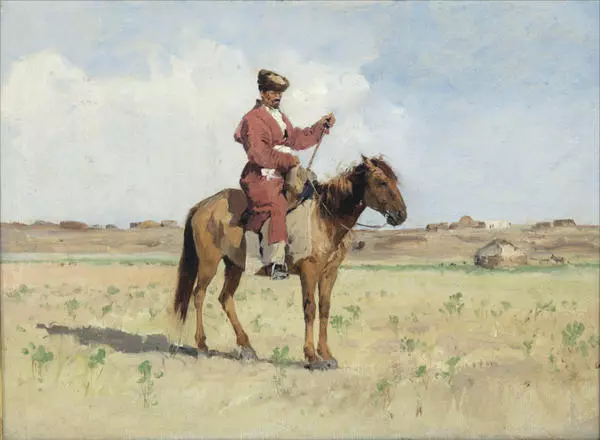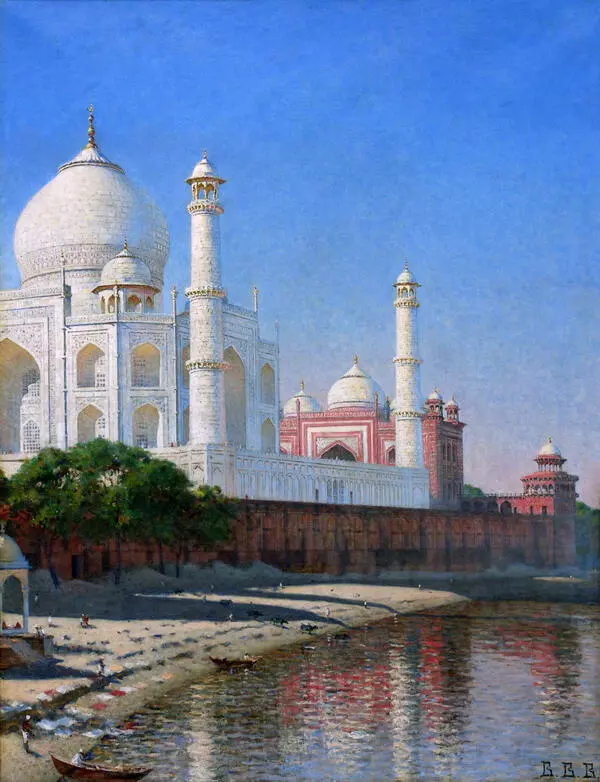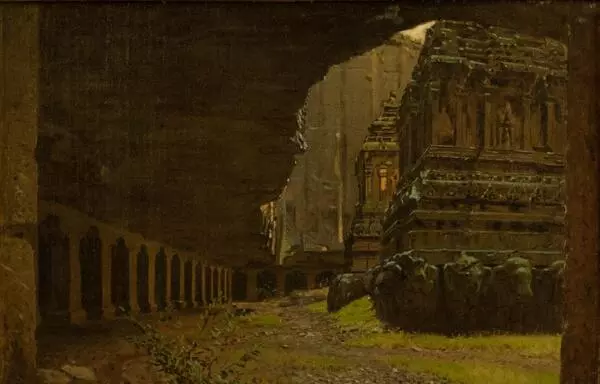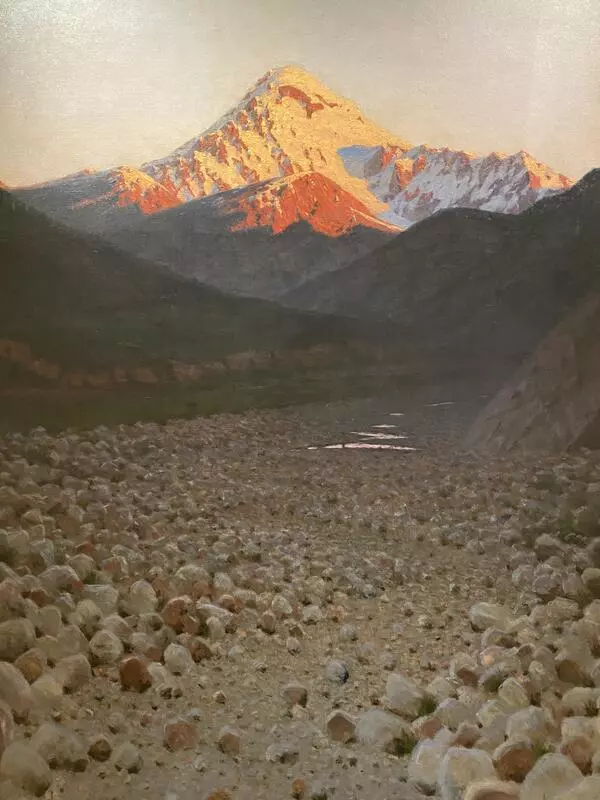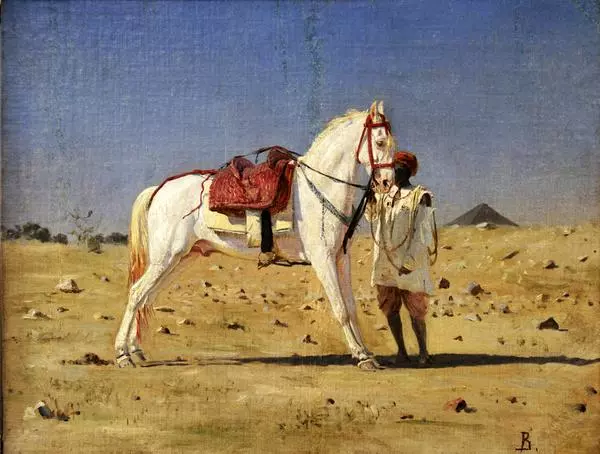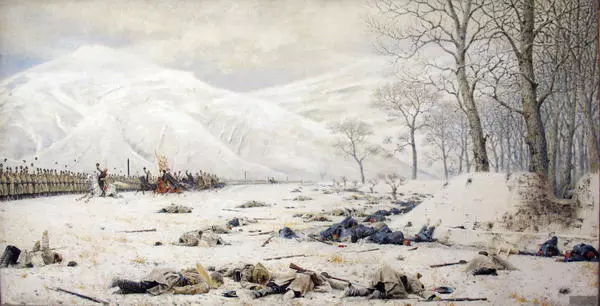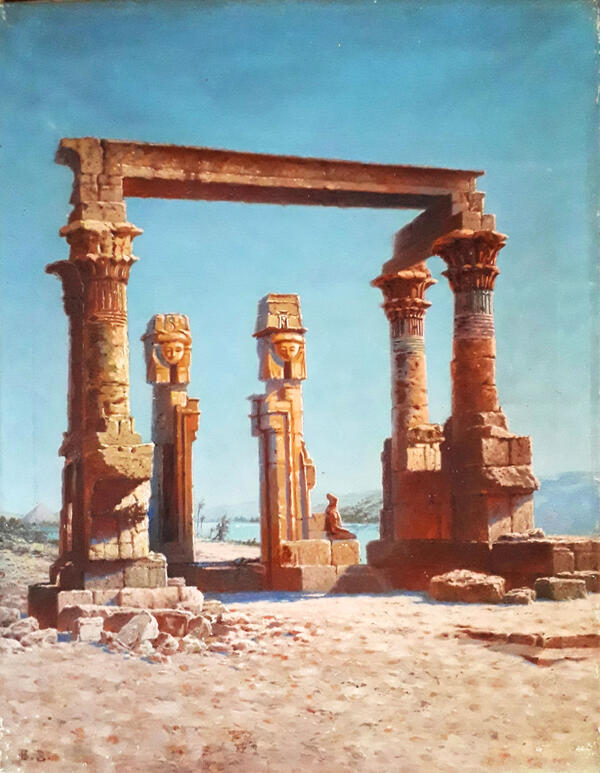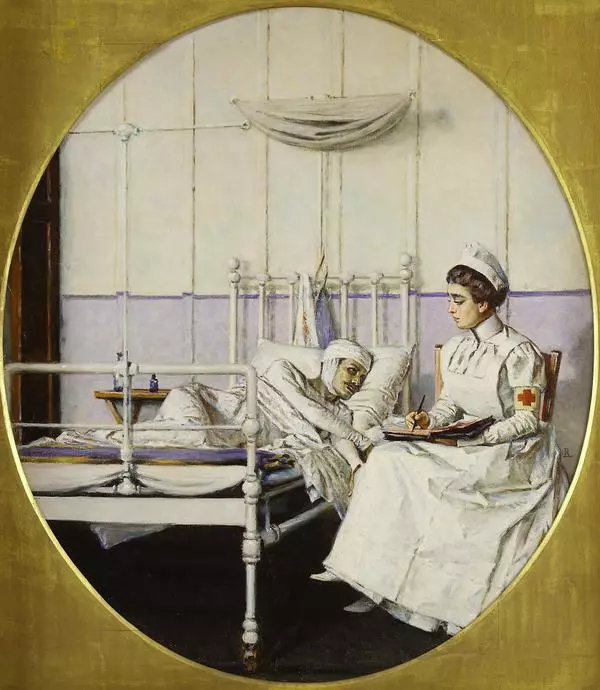Vasily Vasilyevich Vereshchagin is a significant figure in Russian art; he opened with his oeuvre a new page in the history of world battle painting; he is the author of the famous series of works reflecting the tragic face of the war (Apotheosis of War and others). Being by nature an unusually active and deedful man, he simultaneously studied at the St. Petersburg Sea Cadet Corps (1853–1860) and at the Drawing School (1858–1860). Travelling became a way of learning and mastering the artistic diversity of the world for Vereshchagin. It seemed that there were not a single corner in the world that he had not visited, choosing rather dangerous places: Turkestan (1867–1869), India (1874–1876, 1882–1883), Palestine (1884), Russian North (1887–1888, 1894), Philippines and Cuba (1901–1902), Japan (1903).
As an officer, Vereshchagin took part in all military operations waged by the Russian army: the Central Asian campaign (1867–1868 and 1869), the Russian-Turkish (1877–1878) and Russian-Japanese (1904) wars. The artist stayed aside all the parties and communities, he did not join art associations, he did not accept any awards: in 1874 he was elected professor of the Imperial Academy of Arts, but refused this title. In his artwork Vereshchagin looked for a decisive renewal of the artistic language towards a documentary-accurate depiction of the reality. His painting method, unique for the Russian art of the second half of the 19th century, rivals in terms of likelihood and objectivity of reproducing nature with photographic fixation. But at the same time the artist strove to ensure that his painting did not lose next to and in comparison with a photo. Vereshchagin introduced idea, high meaning, morality into his significant large works and expressed it weightily and vividly, coming to a broad generalization. The artist said that each of his paintings must say something, that was why he painted.
The sketch ‘Temple of the God of War’ was created during the artist’s journey to India (1874–1876). Its other names: Idol Temple, Buddhist Temple. Several elements of the construction, carefully reproduced, refer the viewer to the sketch Buddhist Temple in Darjeeling. Sikkim (The Tretyakov Gallery), showing this temple from a different perspective. The author himself considered his sketches to be rather completed artworks, which may also be rightfully said concerning this work. The sketch refers to the first series of works conceived by Vereshchagin in India, which was supposed to convey the uniqueness of the landscape, the ancient architecture of the country, the uniqueness of its life and folk types. The Russian-Turkish war of 1877–1878 prevented the artist from fully realizing his “serial” ideas. But all the more valuable is what he managed to do, creating a magnificent image of this eastern civilization.

